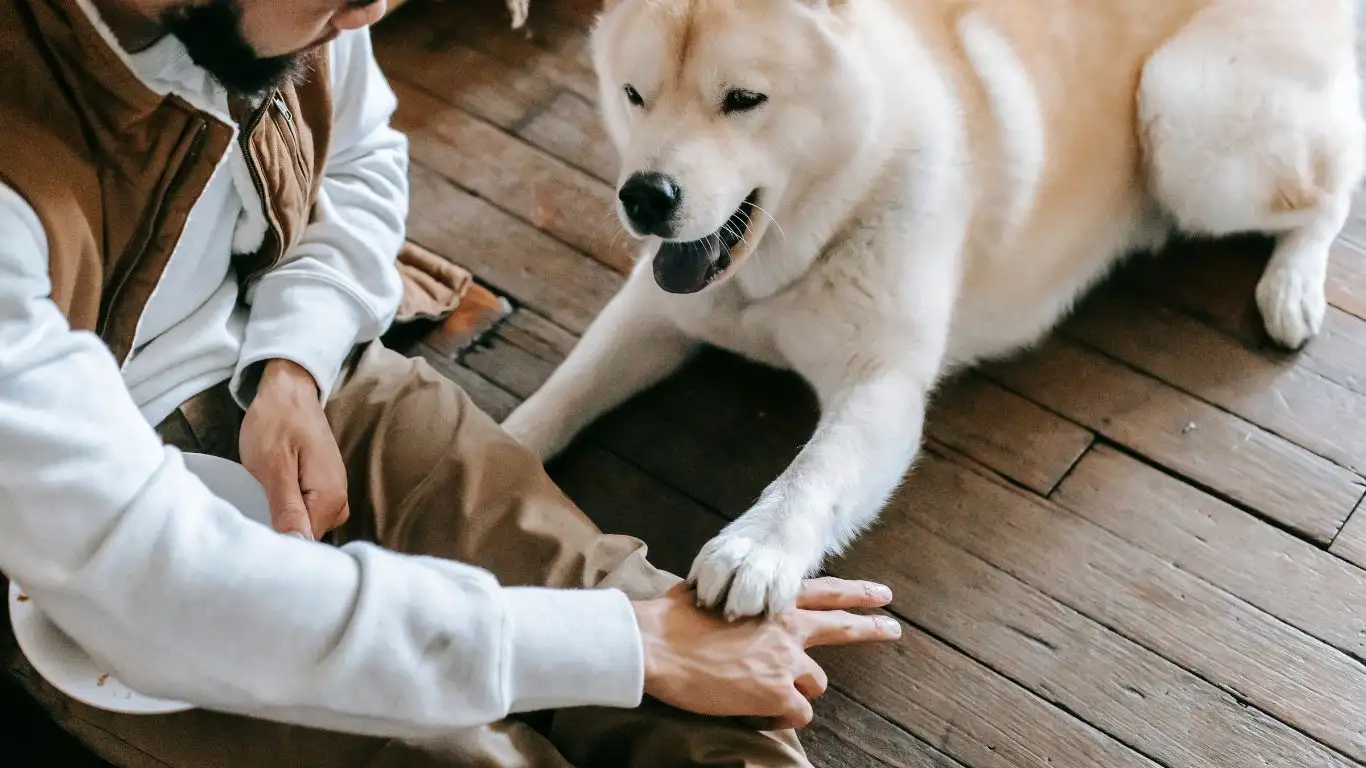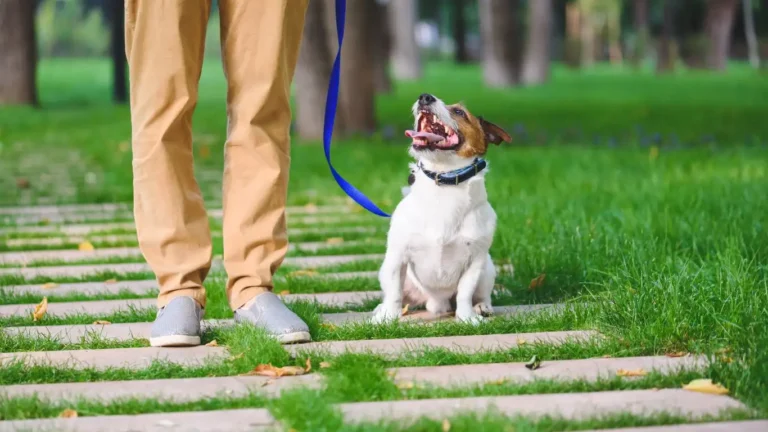Stop Your Dog from Scratching the Door – Proven Training Tips!
If you’ve ever been jolted awake in the middle of the night by the sound of your dog scratching at the door like they’re digging for buried treasure, you’re not alone. As a Certified Professional Dog Trainer – Knowledge Assessed (CPDT-KA), I’ve worked with countless dog parents who struggle with this exact issue. How to train a dog to stop scratching the door isn’t just about keeping your doors scratch-free—it’s about addressing the root cause and teaching your pup a better way to communicate. The good news? With the right approach, patience, and a few trainer-approved strategies, you can put an end to this behavior for good.
Why Do Dogs Scratch the Door?

Before jumping into solutions, it’s essential to understand why your dog is scratching the door in the first place. From my experience, dogs don’t do things just to annoy us (even though it might feel like it at 2 AM). There’s always a reason behind the behavior, and it usually falls into one of these categories:
- Attention-seeking: Your pup has learned that scratching gets a reaction from you—whether it’s letting them out, feeding them, or even scolding them (which, to them, is still attention).
- Separation anxiety: Some dogs panic when left alone and scratch as a way to escape or cope with stress.
- Wanting in or out: If your dog needs to go outside or wants to come back in, they might resort to scratching if they haven’t been taught another way to communicate.
- Boredom or excess energy: A dog with too much pent-up energy might turn to destructive behaviors like scratching.
- Learned behavior: If scratching has worked in the past, your dog will keep doing it.
Step 1: Teach an Alternative Way to Communicate

One of my go-to methods for stopping door scratching is teaching dogs a different way to let their humans know they need something. This not only saves your doors but also strengthens communication between you and your pup. My personal favorite? Training your dog to use a bell or a button instead of scratching.
How to Train a Dog to Use a Bell Instead of Scratching
Bells are a fantastic way to replace door scratching. Here’s how to train your pup:
- Choose your bell: You can use a simple hanging jingle bell or a dog-specific button that plays a sound.
- Introduce the bell: Let your dog sniff and explore the bell. Encourage interaction by rewarding them with a treat when they touch it.
- Associate it with the door: Each time you take your dog outside, gently guide their paw or nose to touch the bell first. The second they touch it, open the door and let them out.
- Be consistent: Every single time your dog needs to go out, make sure they ring the bell before the door opens.
- Reward success: If they ring the bell on their own, immediately open the door and praise them.
Most dogs pick up on this within a few days, and once they realize the bell gets them what they want, they’ll stop scratching the door entirely.
Step 2: Ignore the Scratching

Here’s the hard truth—if you’ve been responding to your dog’s scratching by letting them out or giving them attention, they’ve learned that it works. To break this habit, you have to do the opposite.
The Right Way to Ignore the Behavior
It’s not just about turning your back. There’s a proper way to ignore door scratching so your dog learns that it doesn’t get them what they want.
- Stay calm: Don’t scold, yell, or even look at them when they scratch.
- Wait it out: Even if they scratch for minutes, don’t cave in.
- Reward the right behavior: The second your dog stops scratching and sits or stands calmly, immediately reward them by opening the door.
- Be patient: The first few times, they may scratch even more (this is called an extinction burst), but stay strong—soon, they’ll learn that scratching doesn’t work.
By combining this with the bell training, you’re replacing the bad habit with a better one.
Step 3: Reinforce Calm Behavior

Now that we’ve tackled stopping the scratching and given your dog a new way to communicate, the next step is reinforcing calm behavior. If your dog gets overly excited every time they approach the door, that energy can easily translate into scratching again.
I’ve worked with plenty of dogs who get so amped up about going outside that they practically bounce off the walls—or, in this case, scratch them. Teaching your dog to wait patiently instead of reacting impulsively is a game-changer.
How to Train Door Manners
Here’s a simple, trainer-approved method to encourage patience:
- Have your dog sit before opening the door: Before letting them out, ask for a simple sit. If they scratch, ignore it and wait.
- Only open the door when they’re calm: The second they sit quietly, reward them with a treat and open the door.
- Practice short waits: Start with just a second or two of calm behavior, then gradually increase the time.
- Use a release cue: A phrase like “Okay, go!” tells them it’s time to move.
Dogs are smart. If they realize the door only opens when they’re calm, they’ll ditch the scratching and settle down instead.
Step 4: Provide Mental & Physical Stimulation

Another major reason dogs scratch at doors? Boredom and excess energy. A dog with too much pent-up energy will look for ways to release it, and unfortunately, your door might become a casualty.
In my years of training, I’ve noticed that high-energy dogs—like Border Collies, Labradors, and Huskies—are often the biggest culprits when it comes to destructive behaviors like door scratching. But even small breeds need an outlet for their energy.
Ways to Keep Your Dog Engaged
If your dog is scratching out of boredom, try these trainer-recommended activities:
- Longer walks or play sessions: A tired dog is a well-behaved dog. Make sure your pup is getting enough exercise for their breed and energy level.
- Interactive puzzle toys: Toys that make your dog work for treats keep their mind busy and prevent destructive habits.
- Training games: Short training sessions with new commands or tricks can wear out their brain just as much as physical exercise.
- Sniff walks: Letting your dog explore and sniff on walks is mentally enriching and helps them burn energy.
- Doggy playdates: Social interaction with other dogs can be an excellent energy release.
Sometimes, scratching isn’t a behavioral issue—it’s just a sign that your dog needs more activity. Addressing this can naturally eliminate the problem.
Step 5: Manage the Environment

Even with all the right training, sometimes managing your environment is the quickest way to stop a problem behavior. If your dog still has trouble resisting the urge to scratch, a few small adjustments can make a huge difference.
Quick Fixes to Protect Your Doors
While you work on training, try these tricks to prevent damage:
- Use a door guard or protective film: Clear plastic door protectors can save your doors from scratches while you train your dog.
- Install a pet gate: If scratching is happening when you’re not home, a pet gate can keep your dog from reaching the door in the first place.
- Provide an alternative scratching surface: Some dogs scratch as a way to relieve anxiety. A designated scratching mat or rug can redirect the behavior.
- Try motion-activated deterrents: Devices that release a harmless puff of air when your dog gets too close can discourage scratching.
Training is key, but a little environmental management can make the process smoother and keep your doors looking like new.
By implementing these steps, you’ll not only stop door scratching, but you’ll also improve your dog’s communication skills, patience, and overall behavior. The key is consistency—stick with it, and you’ll see amazing results!
Step 6: Address Underlying Anxiety Issues

Sometimes, stopping door scratching isn’t just about training—it’s about tackling deeper emotional issues. Separation anxiety is one of the most common reasons dogs scratch doors, especially when they’re left alone. I’ve seen this with countless clients, and it’s heartbreaking to watch a dog struggle with panic when their favorite human isn’t around.
Signs Your Dog’s Scratching Is Anxiety-Driven
If your pup scratches the door but also shows these behaviors, anxiety might be the root cause:
- Excessive whining, pacing, or barking when you leave or return.
- Destructive behavior beyond door scratching—like chewing furniture or digging at carpets.
- Toileting accidents even when they’re house-trained.
- Overly clingy behavior when you’re home, following you everywhere.
If this sounds like your dog, the scratching won’t stop until you help them feel more secure.
How to Ease Separation Anxiety
Here’s what I’ve found works best for dogs struggling with anxiety-related scratching:
- Practice short departures: Start leaving for just a few minutes and gradually increase the time. This helps your dog build confidence that you’ll always come back.
- Use calming aids: Pheromone diffusers, anxiety wraps, and calming treats can provide comfort.
- Desensitize exit cues: Many dogs get anxious when they see you grab your keys or put on shoes. Try doing these things without leaving so they stop associating them with separation.
- Leave interactive toys: Puzzle feeders and treat-stuffed Kongs can keep your pup busy and distracted when you’re gone.
- Consider professional help: Severe cases of anxiety may require working with a trainer or vet for additional support.
Helping your dog feel safe when alone won’t just stop scratching—it’ll make them happier overall.
Step 7: When to Seek Professional Help

Even with the best training and management strategies, some dogs struggle to break the door-scratching habit. That’s when it might be time to call in a professional. Trust me, I’ve had clients who tried everything, and the missing piece was simply getting outside guidance.
Signs You Might Need a Trainer or Behaviorist
- Your dog’s scratching is severe, and nothing seems to be working.
- The behavior is accompanied by extreme anxiety or aggression.
- Your dog damages doors to the point of injury (bleeding paws, broken nails).
- You’re feeling frustrated or unsure how to move forward.
Certified trainers and behaviorists can tailor a training plan to your dog’s specific needs. A good place to start is the Certification Council for Professional Dog Trainers (CCPDT) or the International Association of Animal Behavior Consultants (IAABC).
Final Thoughts
So, there you have it—everything you need to know about how to train a dog to stop scratching the door. From understanding why they do it, to teaching better habits, reinforcing calmness, and tackling anxiety, this isn’t just about saving your doors—it’s about improving communication and strengthening your bond with your dog.
The key? Patience and consistency. Changing behavior takes time, but with the right techniques, your pup will learn that there are better ways to get your attention than turning your doors into a scratching post.
References
- American Kennel Club (AKC) – Dog training tips and behavior guides.
- ASPCA – Understanding separation anxiety in dogs.
- PetMD – How to stop destructive behaviors in dogs.
Disclaimer
This article is for informational purposes only and is not a substitute for professional veterinary or training advice. If your dog’s behavior is extreme or causing harm, consult a certified dog trainer or veterinarian.






